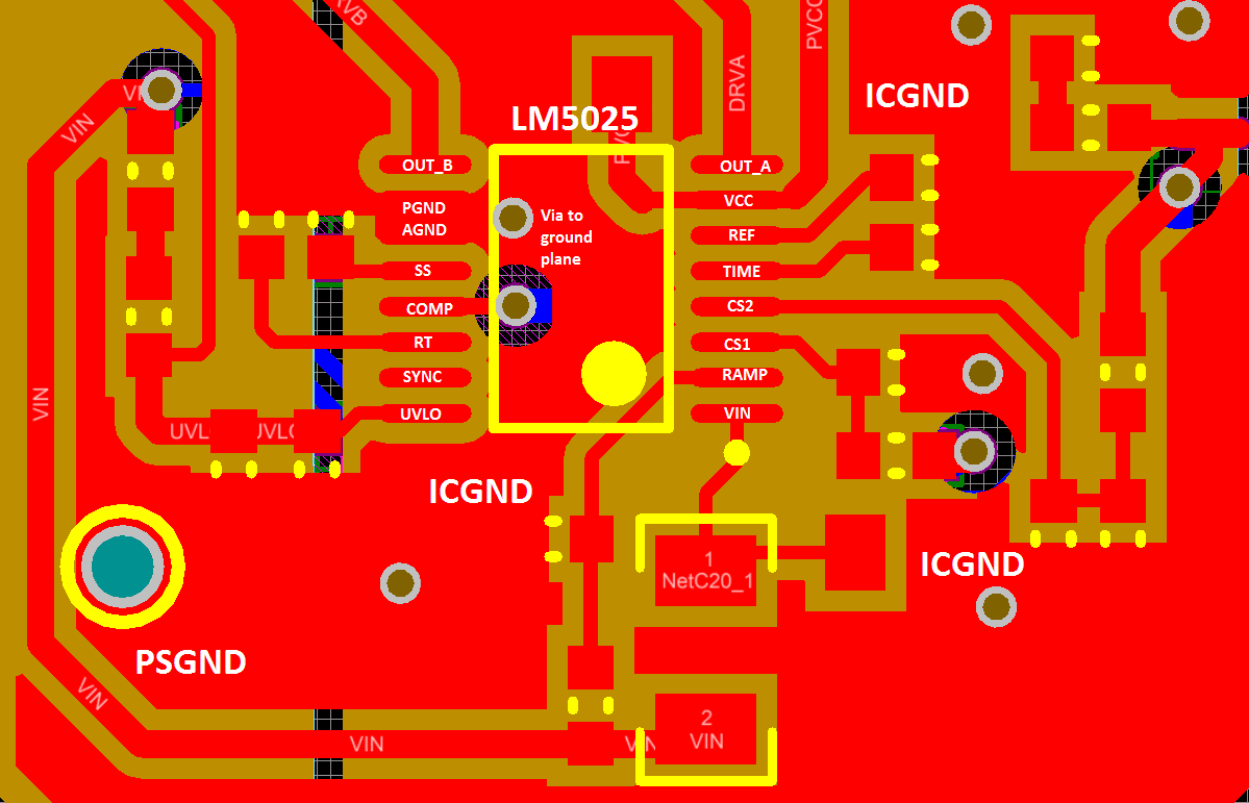SNVS265C December 2003 – January 2016 LM5025
PRODUCTION DATA.
- 1 Features
- 2 Applications
- 3 Description
- 4 Revision History
- 5 Pin Configuration and Functions
- 6 Specifications
- 7 Detailed Description
- 8 Application and Implementation
- 9 Power Supply Recommendations
- 10Layout
- 11Device and Documentation Support
- 12Mechanical, Packaging, and Orderable Information
10 Layout
10.1 Layout Guidelines
- Connect two grounds PGND (power ground) and AGND (analog ground) directly as device ground ICGND. The connection must be as close to the pins as possible.
- If there are multiple PCB layers and there is a inner ground layer, use two vias or one big via on GND and connect them to the inner ground layer (ICGND).
- The power stage ground PSGND should be separated with the ICGND. PSGND and ICGND should be connected at a single point close to the device.
- The bypass capacitors to the VCC pin and REF pin should be as close as possible to the pins and ground (ICGND).
- The filtering capacitors connected to CS1 and CS2 pins should have connections as short as possible to ICGND; if an inner ground layer is available, use vias to connect the capacitors to the ground layer (ICGND).
- The resistors and capacitors connected to the timing configuration pins should be as close as possible to the pins and ground (ICGND).
10.2 Layout Example
 Figure 22. LM5025 Layout Recommendation
Figure 22. LM5025 Layout Recommendation